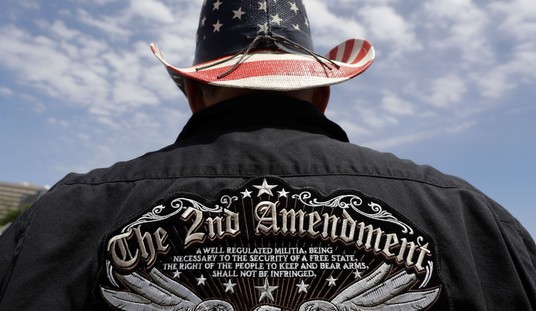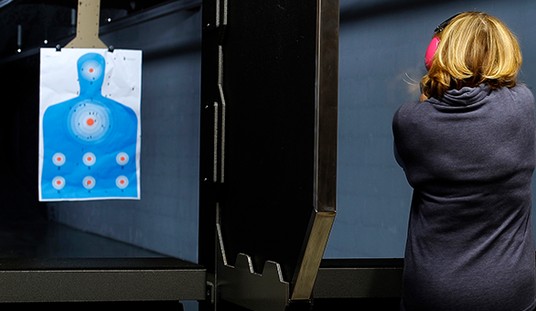Under cover of darkness on June 27, 2005, a helicopter bearing a four-man team of Navy SEALs flew towards some of the harshest terrain on earth – Afghanistan’s Hindu Kush Mountains. Their mission: to locate and gather intelligence on a high-ranking Taliban official with known ties to Osama bin-Laden.
According to their intelligence, the SEALs would be operating amongst as many as 200 enemy fighters. Once they had eyes on the target, a larger force would then attack, capturing or killing the target. The fateful events that followed would result in the bloodiest day for the SEALs since the D-Day invasion in 1944.
Lieutenant Michael Murphy (29) of Patchogue, N.Y. was the officer-in-charge. His men were Marcus Luttrell (30) of Willis, Tex., Matthew Axelson (29) of Cupertino, Calif., and Danny Dietz (25) of Littleton, CO.
The team was inserted at night by helicopter into the heavily-forested, mountainous terrain east of Asadabad, a village in the Afghanistan’s Kunar Province. Intelligence reported that a large group of armed men had slipped through a pass in the mountains from Pakistan, suggesting that there was a valuable target in the area. The area the SEALs occupied was considered a “hornet’s nest” – a Taliban stronghold that coalition forces rarely ventured into. The Taliban offered rewards to local Afghans for shooting U.S. forces or reporting on their locations.
The SEALs established their observation post, but due to low clouds and rain were unable to manage a clear line of sight on the target area. They moved in closer, selecting a position about one mile from the village.
A couple of hours after relocating, three goat herders happened upon one of the well-camouflaged SEALs. Once the SEALs were compromised, they held the herders while they decided what their course of action would be. Their captives were unarmed, but refused to communicate with the Americans. It was clear that the herders were sympathetic to the Taliban. Although they represented a clear and present danger to the team, killing the civilians would violate the rules of engagement. The team knew that the bodies would probably turn up on Arab media and their deaths would inevitably be linked to the SEALs, resulting in prison time.
The SEALs decided that although they knew that releasing the herders would likely mean the compromise of the mission, and possibly signing their own death warrants – they would let the Afghans go. Indeed, the SEALs watched the men head straight for the village.
At about 2 p.m., about a hundred Taliban launched a well-coordinated, three-pronged attack down the mountain at the SEALs. The Taliban were familiar with the territory, and were attempting to pin down the Americans and seal off their escape route.
The team was greatly outnumbered, but SEALs are trained to handle larger forces. Typically, the SEALs would rush the ambush, but the terrain and the unknown number of enemy fighters ruled out that option. The commandos had no choice but to fight off their attackers as they made their way down the steep ravine, falling sometimes 20 to 30 feet at a time. The men maneuvered down the precipitous slope while Dietz, the communications man, remained at the top as he attempted in vain to contact the base.
They moved about two miles down the side of the mountain, a vertical height of about 5,000 feet. Meanwhile, the Taliban poured down heavy fire on the SEALs with AK-47 rifles, rocket-propelled grenades, and mortars.
The SEALs had killed dozens of Taliban fighters, but enemy fire was taking its toll: Lt. Murphy had been hit seven times; Axelson was hit at least 22 times; Dietz was hit 16 times. In addition to their gunshot wounds, all men had injuries from tumbling down the ravine. After trying unsuccessfully to reach Bagram Air Force Base for backup, Dietz’s mortal wounds overtook him.
45 minutes into the firefight, the SEALs reached the bottom of the ravine. They were surrounded, down one man, and running low on ammunition. Night was approaching and fog began to roll in.
With no ability to reach Bagram by radio, the severely-wounded Murphy decided he had no choice but to use his satellite phone. A Quick Reaction Force (QRF) would bring air support and reinforcements to his embattled SEALs. In order to use the phone, however, Murphy knew he had to move to the highest point he could to get a clear signal. This exposed position put him in extreme danger, but the call had to be made if anyone was to make it out alive. Murphy took at least one round in his back in addition to the bullets in his stomach and chest earlier, but he managed to complete the call. After disconnecting, Murphy moved into a firing position, but was soon overrun by the enemy. For his actions, Lt. Murphy would receive the Medal of Honor.
While the QRF mobilized, a Predator reconnaissance drone was sent to the area to find the SEALs. The infrared footage relayed to the base confirmed that the unit was about to be overrun.
Axelson and Luttrell were the only two left. While they took cover behind a log, Axelson was treating a bullet wound in his head. A RPG round hit their position, throwing Luttrell over a ridge and knocking him unconscious. Despite Axelson’s wound to the head and the devastating explosion, he still managed to fight on for several hundred feet before falling.
A QRF consisting of MH-47 Chinook helicopters and Cobra gunships raced to the battle. It would take several minutes to reach the SEALs, and as the Chinooks were faster at the high altitudes than the heavily-armed attack helicopters, a decision had to be made: The QRF could slow down and let the attack helicopters catch up, or they could take their chances and race ahead to try unloading the reserve force without protection.
The aircrews decided that SEALs needed the help right away, so the transports flew on. The Chinook flew into the landing zone, looking for a safe spot to set the helicopter down in the rugged terrain. The crew could have set the helicopter down in a safer area of the battlefield, but the SEALs were in grave danger and needed help immediaetly. Another Taliban force was waiting for the QRF, and as the pilot attempted to set down on a ledge, a RPG hit the helicopter, sending it out of control. It slid down the mountain, and crashed, killing all 16 men on board.
When Luttrell regained consciousness, he was paralyzed from the waist down and was bleeding heavily from the large pieces of RPG shrapnel sticking out of his legs. In the days that followed, Marcus Luttrell managed to not only survive, but fought off numerous enemies, and crawled for miles to safety. He tells his incredible story in his book Lone Survivor: The Eyewitness Account of Operation Redwing and the Lost Heroes of SEAL Team 10.
Days later, Luttrell met up with a patrol of U.S. Army Rangers and Green Berets. The team had been searching for the missing SEAL for several days, enduring heavy rain and freezing temperatures. They had been going on a day-and-a-half without food or water, and some soldiers had lost about 20 or 30 pounds of body weight. Some of their feet were so beaten up that they could barely walk.
11 Navy SEALs and 8 Army Task Force 160 aircrew died in the battle. Marcus Luttrell, Matt Axelson, and Danny Dietz each received the Navy Cross, the second-highest decoration for valor in the military. For his actions, Michael Murphy received the Medal of Honor on October 22, 2007.
The men who gave their lives on the helicopter are:
Staff Sgt. Shamus Goare, 29, Danville, Ohio.
Chief Warrant Officer Corey Goodnature, 35, Clarks Grove, Minn.
Sgt. Kip Jacoby, 21, Pompano Beach, Fla.
Sgt. 1st Class Marcus Muralles, 33, Shelbyville, Ind.
Major Stephen Reich, 34, Washington Depot, Conn.
Sgt. 1st Class Michael Russell, 31, Stafford, Va.
Chief Warrant Officer Chris Scherkenbach, 40, Jacksonville, Fla..
Master Sgt, James Ponder III, 36, Franklin, Tenn.
Chief Petty Officer Jacques Fontan, 36, New Orleans, La.
Lt. Cmdr. Erik Ristensen, 33, San Diego, Calif.
Petty Officer 1st Class Jeffrey Lucas, 33, Corbett, Ore.
Lt. Michael McGreevy, Jr., 30, Portville, N.Y..
Petty Officer 1st Class Jeffery Taylor, 30, Midway, W. Va.
Senior Chief Petty Officer Daniel Healy, 36, Exeter, N.H.
Petty Officer 2nd Class James Suh, 28, Deerfield Beach, Fla.
Petty Officer 2nd Class Eric Patton, 22, Boulder City, Nev.








Join the conversation as a VIP Member